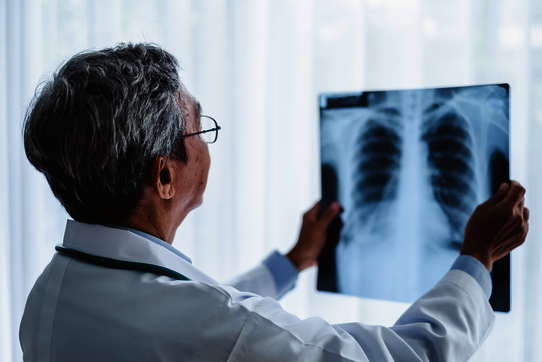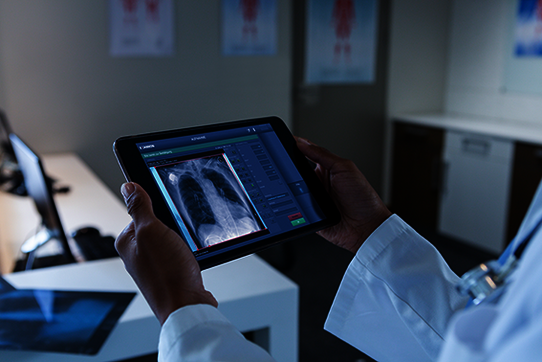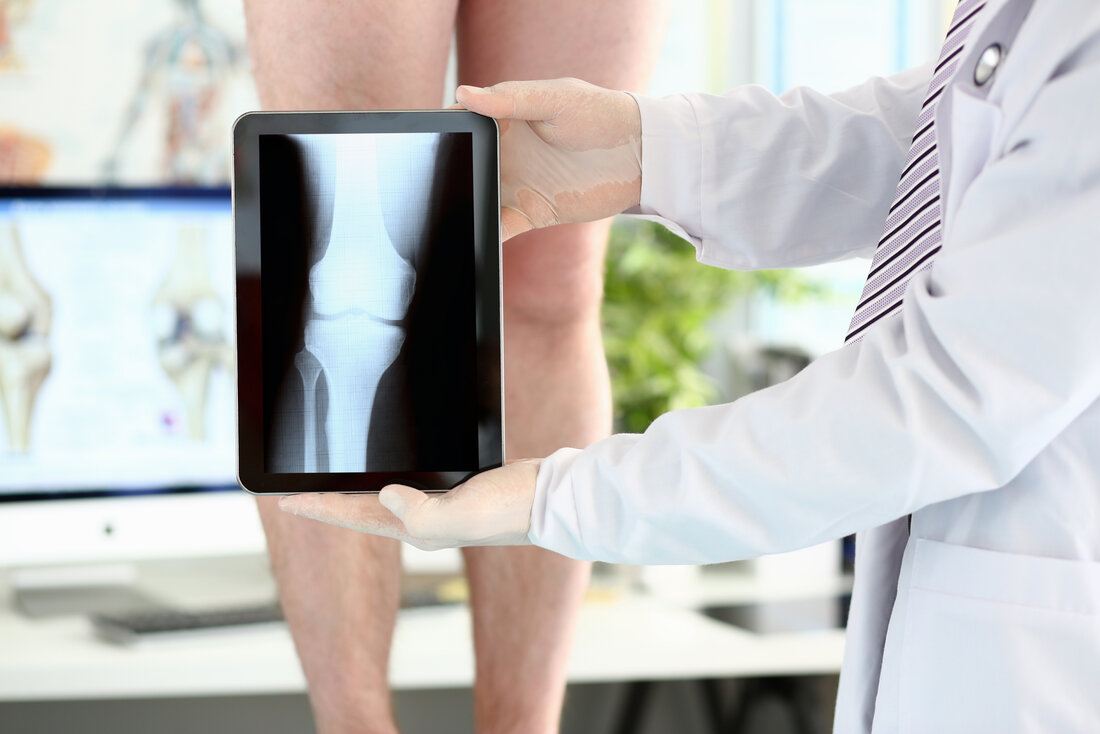What is digital X-ray?
Digital X-ray is a modern development of the classic X-ray procedure that relies on the use of digital technologies and it is now the standard procedure used worldwide. Compared to conventional film technology, it offers numerous advantages, including significantly lower radiation exposure, faster image processing and the ability to store and share the results digitally.
This innovative method is used in medical diagnostics, dentistry and even in industry to gain detailed insights into internal structures. But how exactly does digital X-ray work, what advantages does it offer and how does it differ from traditional X-ray? This page will tell you everything you need to know about this pioneering procedure.
What is the difference between digital and analog X-rays?
Image capture and processing
In analog X-rays, the X-rays are recorded on a special film, which then has to be chemically developed. This process is time-consuming and requires additional effort. In digital X-rays, a digital detector is used instead of film, which converts the X-rays into electrical signals. These are processed into a digital image in a matter of seconds.
- Advantages of digital X-rays – rapid image availability
Radiation exposure
The film technology used in analog X-rays often requires a higher radiation dose to ensure sufficient image quality. In contrast, the highly sensitive detectors used in digital X-rays enable significantly reduced radiation exposure.
- Advantages of digital X-rays – lower radiation exposure
Image quality and post-processing
The image quality in analog X-rays is fixed—once developed, the image cannot be changed. Errors or unclear areas often require a new image to be taken. With digital X-rays, images can be post-processed, e.g., by adjusting brightness, contrast, or magnification to make details more visible.
- Advantages of digital X-rays – Better image quality & diagnostics
Storage and archiving
Analog X-ray images must be stored physically, which takes up a lot of space and involves considerable administrative effort. Digital X-ray images, on the other hand, can be stored on digital storage media or in the cloud, enabling simple and space-saving archiving.
- Advantages of digital X-rays – Easy storage & archiving
Environmental friendliness
The development of analog X-ray films requires chemical substances that can be harmful to the environment and must be disposed of properly. With digital X-rays, these chemical processes are completely eliminated, making the procedure much more environmentally friendly.
- Advantages of digital X-rays – Modern infrastructure in your practice
Time required
Film development in analog X-rays takes a long time, while in digital X-rays the results are available almost immediately and can be analyzed directly or shared with other doctors.
- Advantages of digital X-rays – Cost efficiency in your business
EXAMION offers you uncomplicated retrofit options
- DR retrofit for medical applications
- CR retrofit for medical applications
- DR retrofit for veterinary applications
- CR retrofit for veterinary applications
Examination procedure
The procedure for X-ray examinations does not change significantly when switching to digital X-rays.
The patient is prepared first, jewelry or interfering objects must be removed. The patient is then positioned correctly by qualified X-ray specialists. Depending on the area of the body to be examined, the X-ray can be taken in a standing, lying or sitting position.
The X-ray system is precisely adjusted to the required image. The image is acquired using a detector that converts the X-rays into a digital signal. The image appears on a monitor within seconds, where it can be directly checked, post-processed and analyzed by the doctor. After analysis, the images are stored digitally and can be forwarded quickly if required. Finally, the doctor discusses the results with the patient and clarifies the next steps.
The two methods of digital X-ray
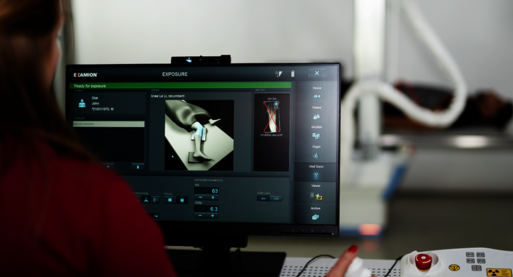
In the direct radiography process, X-rays are sent directly to a detector.
This converts the radiation into electrical signals, creating electronic image information.
The computer's connected image processing system then converts the electronic image information into X-ray images in a matter of seconds. These are then evaluated by the specialist.
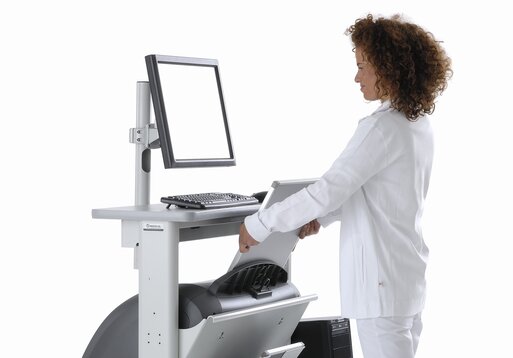
In the CR method, X-rays are directed onto phosphor-coated imaging plates.
The phosphor layer, which is located in the imaging plate cassette, stores the radiation intensity and generates an image from it.
In order to view the image, the imaging plate cassette must be brought to the CR scanner and read out. The read-out device generates digital data, which is displayed as an X-ray image in the connected image processing program on the computer.
The data on the imaging plate is then erased by light so that the next X-ray image can be taken.
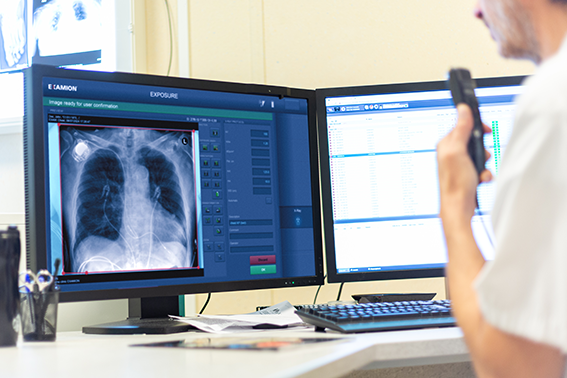
1. Acquisition costs
- Investment in equipment: Digital X-ray detectors (DR), CR read-out devices and diagnostic monitors are more expensive to purchase than the analog alternatives.
- Installation: Adaptations to existing X-ray systems and integration into IT systems can incur additional costs.
2. Operating costs
- Lower consumables: In contrast to analog X-rays, there are no costs for X-ray films, chemicals and their disposal.
- Software and maintenance: Digital systems incur costs for updates, licenses and device maintenance.
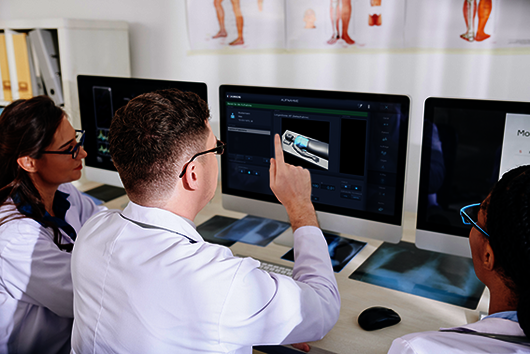
3. Savings
- Time savings: Faster image processing reduces working time and increases efficiency in everyday practice.
- Space saving: Digital storage eliminates the need for physical archives.
- Environmental benefits: Eliminated chemicals and less radiation dose save resources in the long term.
4. Financing and funding options
- EXAMION offers various financing options and rental models.
- In some countries, there are funding programs that support the switch to digital X-ray technologies.
Despite higher acquisition costs, a digital X-ray system pays for itself in the long term through cost savings and increased efficiency.
EXAMION product portfolio
Use our product quickfinder to select the right product for your practice in three steps.
X-ray offers
We regularly have special offers for you. You are welcome to find out more.
